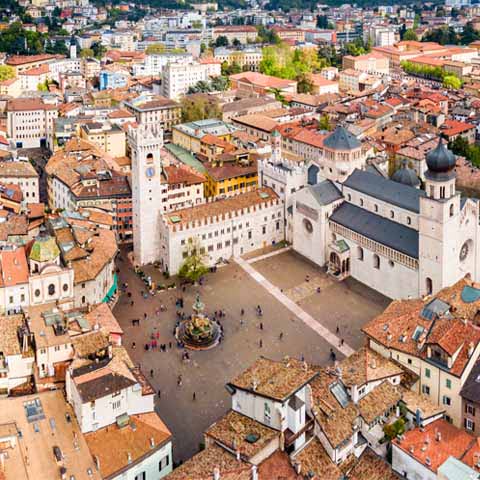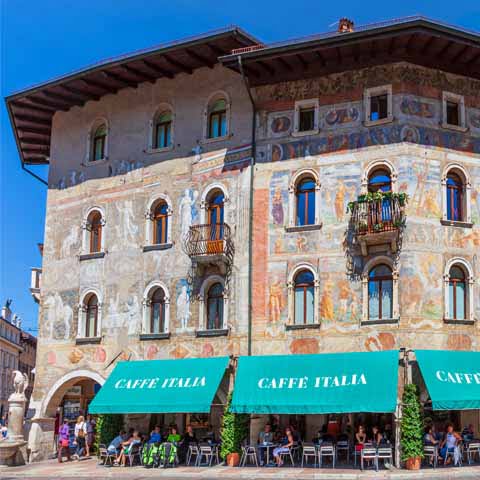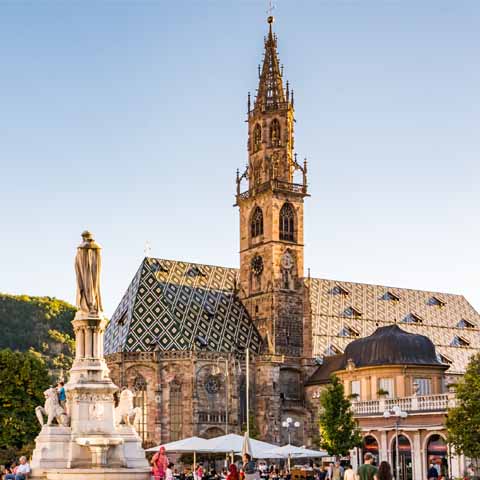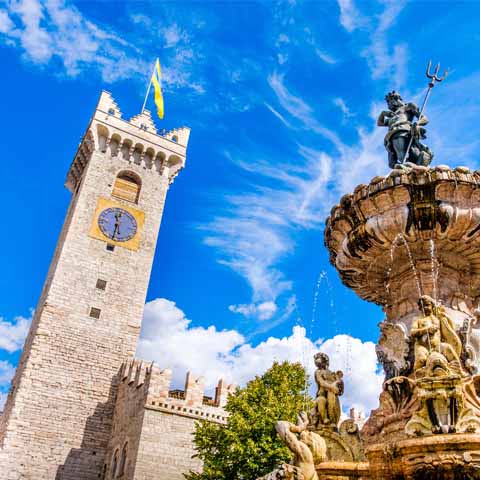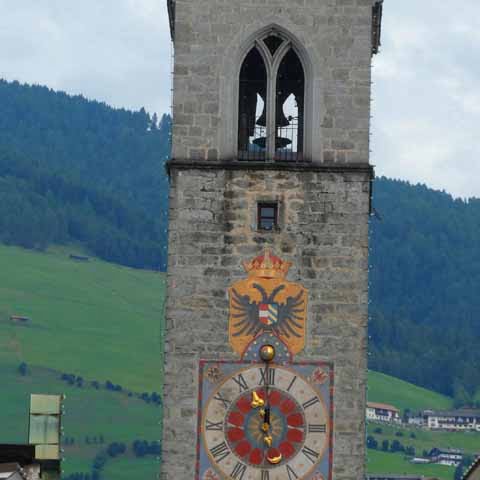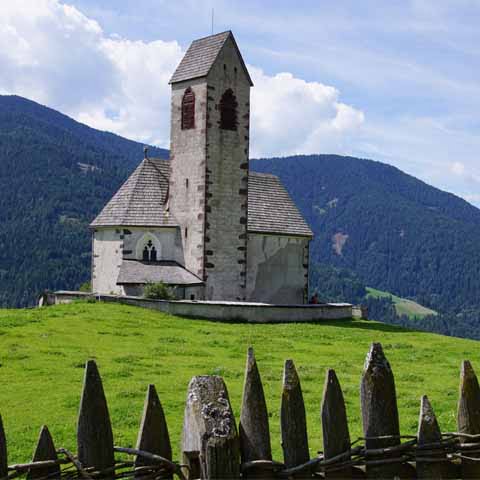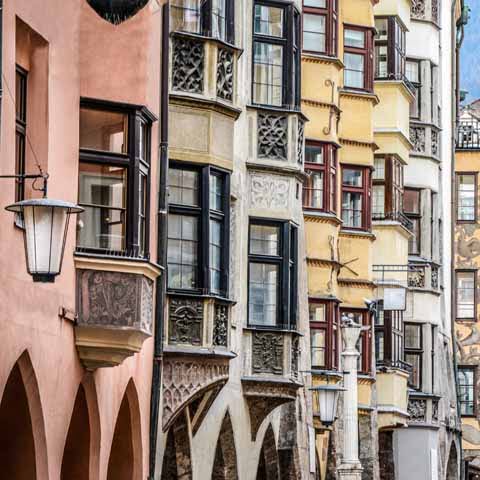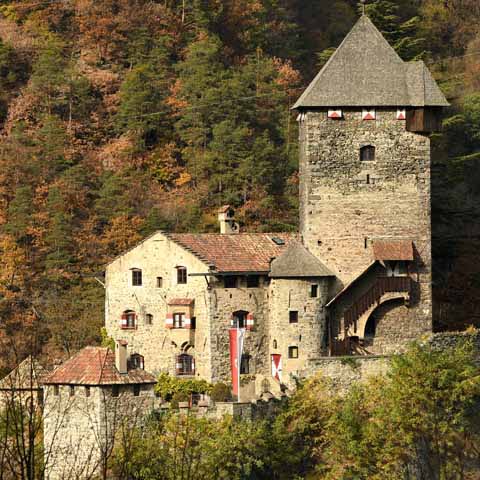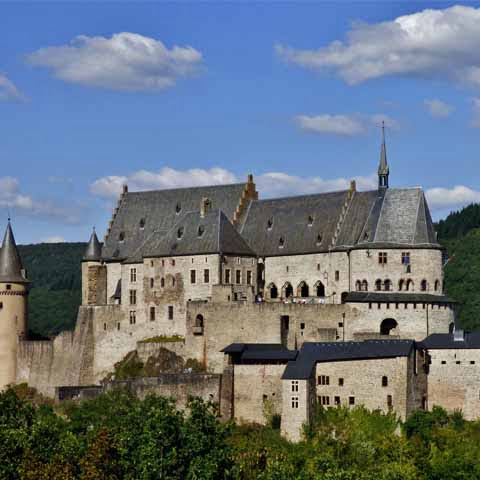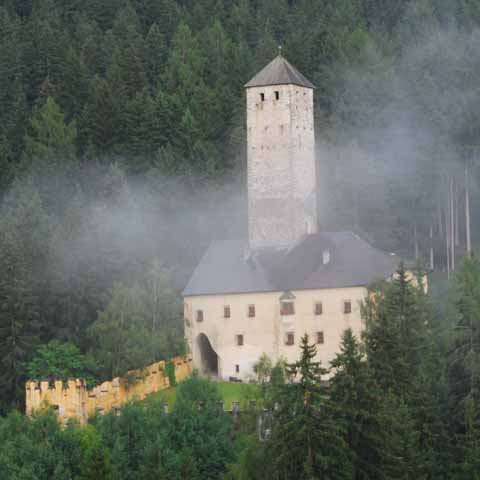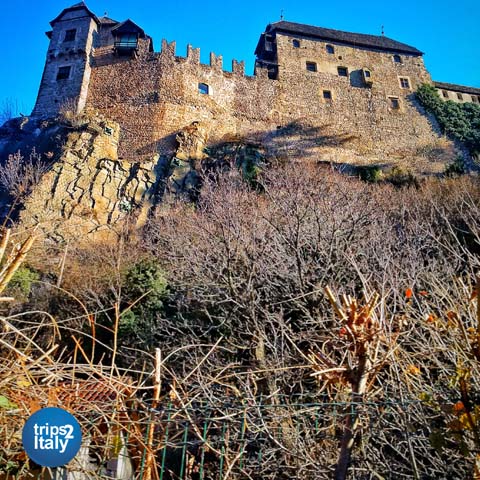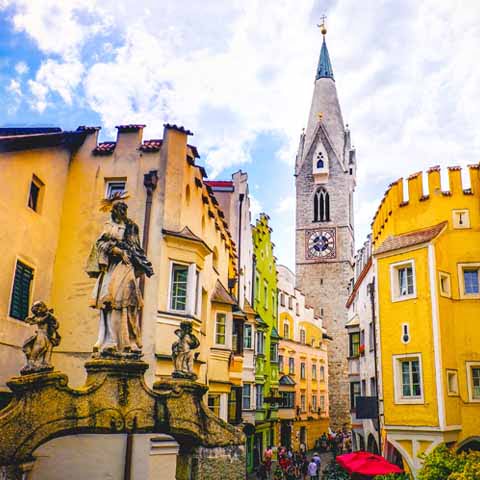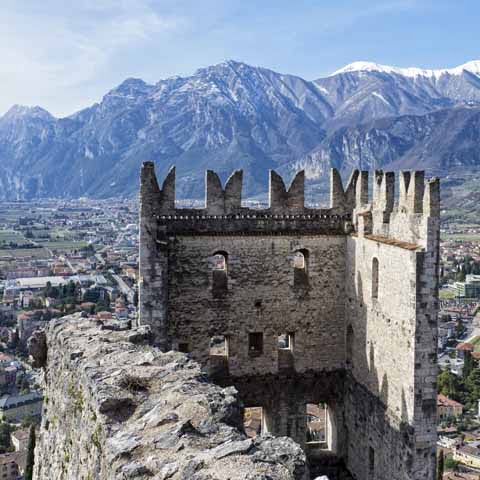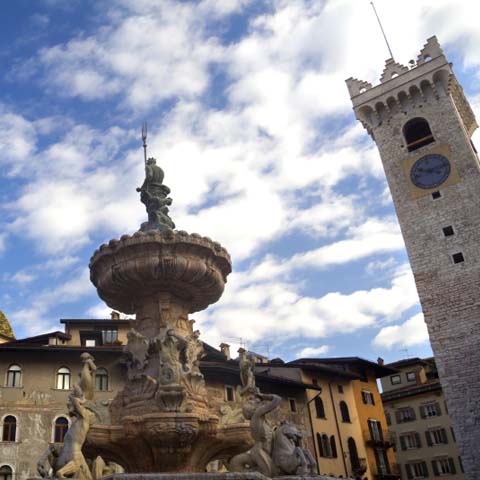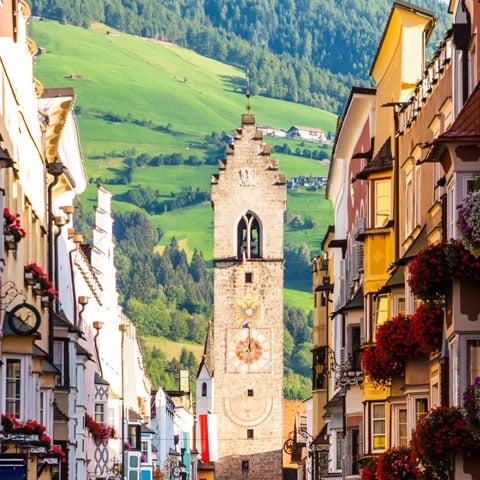Trentino Alto Adige History Travel Guide
Trentino-Alto Adige is the northernmost region of Italy, and since February 1948 it constitutes an autonomous region with special status. It is formed by two territories, Alto-Adige in the north, which corresponds to the autonomous province of Bolzano, and Trentino in the south, corresponding to the autonomous province of Trento.
The differences between these two territories are relevant from a cultural point of view. Bolzano is characterized by the German language and culture, and its territory, Alto Adige, takes its name from the river Adige. The current name was established after the Second World War to replace the Germanic name Südtirol (South Tyrol) which designated a department of the Napoleonic Kingdom of Italy.
Trentino, on the other hand, is characterized by the Italian language and culture and its name derives from Trento.
Until the end of the Second World War, the region was officially called Venezia Tridentina, a term introduced in the second half of the nineteenth century by the linguist Graziadio Ascoli to designate the territories located north-west from Veneto and Friuli Venezia Giulia.
But even if the region is divided into two well-defined parts, Trentino and Alto Adige are united by the common alpine morphology. The region is entirely mountainous, and the landscape is characterized by splendid valleys, rivers, lakes, and imposing peaks.
The region is located in the center of the main communication routes between central and Mediterranean Europe. In fact, the valley of Adige continues with the valley of Isarco towards the pass of Brennero. Thanks to its strategic position, after the Second World War, the region developed as a transit and interchange territory. This led to the development of flourishing tourism that has contributed significantly to changing the character of the region in the last decades.
There is no doubt that Trentino has played a significant role in Italianizing the region of South Tyrol, although Alto Adige is still characterized more by its Germanic heritage rather than its Italian origins.
However, the sharp contrast between the two territories never jeopardized the economy of the region but promoted a cultural exchange and preserved the cultural identities of the peoples.
Prehistory of Trentino Alto Adige
Trentino-Alto Adige is characterized by rich testimonies attesting the presence of man since the earliest times. Numerous artifacts discovered attest that the region was inhabited shortly after the Glacial Age of the Pleistocene.
In the upper territory of the valley of Travignolo, a prehistoric settlement corresponding to the final period of the Upper Paleolithic was discovered, while consistent stratigraphy works have revealed the importance of the region in northern Italy since prehistoric times.
There are also numerous artifacts corresponding to the Mesolithic era, while many others belong to the Bronze Age and beyond. Some of the most noteworthy sites are located in the valley of Adige in the area of Romagnano. The Neolithic cultures are also well-documented, and in the archaeological site of Riparo Gaban, some rare Neolithic objects from the region have been found.
The remains of melting furnaces and some statues found in various locations indicate the presence of flourishing cultures during the Eneolithic Age. But the most striking evidence from the Eneolithic are some mummified corpses found on the Similaun glacier. Together with the mummies, bronze and bone artifacts have been discovered, which are testimonies of a rich cultural heritage and complex civilizations.
The testimonies from the Bronze Age are also important. Some of the most important sites are Molina di Ledro and Fiavè. Located in the proximity of the Lake Garda basin, these remains are evidence of marsh-like settlements. In fact, the numerous clay, bone, metal and wood structures allowed the reconstruction of prehistoric pile dwellings. Scattered throughout Alpine Europe, these dwellings provide an insight into the prehistoric way of life and show how the first agrarian communities interacted with the environment.
In fact, these exceptionally rich archaeological sites constitute one of the most important sources for the study of the early agrarian societies both in the region and in Europe.
But these pile dwellings are not the only important evidence of early societies in the region. The Iron Age left behind the remains of numerous castellieri, fortified boroughs settled on high summits and in naturally defended positions.
Probably the most important from an archaeological point of view are the castellieri near Atesina, which feature some settlements surrounded by thick defensive walls.
History of Trentino Alto Adige
Trentino-Alto Adige began the last phase of the pre-Roman central-alpine culture, called the Rhaetian culture, near the end of the sixth century BC. Its name comes from the Raeti, an ethnic group whose language and culture may have derived from the Etruscans.
This civilization flourished until the second century BC when the Romans conquered the territory. During the Augustan age, the territory assumed the subdivision that marked its history ever since. Namely, the area corresponding to the current province of Trento and part of Bolzano was aggregated to the X Region of Venetia et Histria, while the rest of Alto Adige was assigned to the Roman province of Raetia et Vindelicia.
With the beginning of the fall of the Roman Empire, the territory became a sort of invasion corridor and an access gate to Italy for the various barbarian peoples coming from the North. But the first people who settled permanently in the territory of Alto Adige were the Bavarians. On the other hand, the Longobards extended their influence to the Duchy of Trento.
With the rise of the Carolingian empire, the administrative power in Trento was assigned to a French duke, while the whole area of South Tyrol remained under Bavarian domination until 778 AD, when this region also passed under French rule.
The main events that affected the Peninsula in those ages affected Trentino-Alto Adige too, and Charlemagne transformed the Duchy in a Marca. Called Marca Tridentina, this new territorial division included both Trento and Bolzano.
In 843, the Treaty of Verdun assigned Charlemagne’s Marca to Italy, but the region didn’t remain under Italian rule for long because in 887 the whole territory became the southern appendix of the Germanic part of the Carolingian Empire.
With the fall of the Carolingian Empire and the rise of the Holy Roman Empire, the Germanic populations strengthen their position in the region, and in 976 the Duchy of Carinthia was established, which included the former Marca Tridentina and the area of Verona.
Under the Duchy of Carinthia, the fate of the region was marked by the institutional framework that established a certain ecclesiastical specificity in a mixed Italian-German area. The Duchy, which was dissolved only in 1806, manifested its power in the region from 1027 when it elected Trento and Bressanone as ecclesiastic principalities.
Although territorial contiguous to the Duchy, these principalities were politically and administratively independent and constantly defending themselves against the expansionist attempts of the Counts of Tyrol. The disputes between the two territories of the region continued for centuries within a background of hostilities and struggles between the Church and the Empire.
In 1525, these hostilities led to peasant rebellions which concluded in 1531 with the transfer of Bolzano to Tyrol, under the principality of Bernardo Clesio. These events settled the foundations for the full Germanization of South Tyrol. These problematical reverberations were reflected in the development of the region up to the twentieth century.
From that moment on, the two territories progressed separately, one under Italy and the other under Germany until Napoleon put an end to the existence of the two principalities. After his fall, both Trentino and Alto Adige were aggregated to the Austrian Empire, and this led to identitary demonstrations of the Italians of Trentino, who culturally and linguistically linked to the Peninsula, as they rejected the German language and traditions.
After the First World War, the region was reassigned to Italy, which extended its borders to Brenner. But this caused nothing but further irredentism, this time manifested by the people from Alto Adige who rejected the massive policy of Italicization of the territory. The region started asking for territorial autonomy, but the Fascist regime implemented in the first part of the twentieth century, ignored the requests.
In 1927 the province of Bolzano was established, and with the rise of Hitler and the occupation of Austria, South Tyrol became, once again, a subject of contention between Nazi Germany and fascist Italy. During the Second World War, following the armistice of 1943, the region received the name of the Pre-Alps Operation Zone.
This decision assigned the whole region to the Germans, where it remained until 1945, when it was freed by American troops.
As a result of the De Gasperi-Gruber agreement signed in September 1946, Austria renounced the territory in the favor of Italy, with the condition that Alto Adige should have been treated as an extended regional executive power and Italy should have had a view to safeguarding the cultural and economic development of the Alto Adige ethnic group. Obviously, these conditions encouraged the locals to contemplate a wider autonomy.
But even if the Italian government respected the agreement in 1948 and established the autonomous region with special statute of Trentino-Alto Adige, the government of Vienna contested the implementation criteria adopted by Italy and, after signing the “State” treaty in 1955, supported the right to a full regional autonomy of the province of Bolzano. This brought up tensions between the two countries, and in 1960 Austria appealed to the UN claiming to regain control of the region. However, the General Assembly merely recommended a negotiation which had no noteworthy result.
Following a period of political tensions, an agreement was reached in 1969 and Italy conceded the expansion of the provincial administration of Bolzano. This granted Alto Adige a high level of autonomy and changed the official name of the region to Trentino-Alto Adige/Südtirol. However, the German-speaking minority only accepted the situation in 1992, when the Austrian Parliament fully closed the “South Tyrol Issue.”
Archeology of Trentino Alto Adige
Archaeology is well-represented in Trentino-Alto Adige, and some of the most important artifacts in the region belong to the Rhaetian civilizations. Noteworthy is the site of Val di Cembra where numerous individuated artifacts have been unearthed.
In Val di Non, in the areas of Cles and Sanzeno, some individuated bronze figurines and a series of votive bronzes with Etruscan engravings were discovered. Dating between the fourth and third centuries BC, these artifacts present a great historical interest.
Another important artifact is the Tabula Clesiana, a bronze plate with ancient inscriptions found in Campi Neri, in the municipality of Cles. This plate recalls the granting of Roman citizenship in 46 BC by the Roman emperor Claudius to the ancient inhabitants of Val di Non and to other local populations.
One of the most noteworthy museums of the region is the Museum of Palafitte di Fiavè. Considered a reference point for the history of the oldest European agricultural communities, this place has an exceptional importance in understanding the organization of the settlements and the evolution of agriculture in Alpine Europe.
Another important museum is the underground archaeological museum of Tridentum. Located underneath Trento, the museum includes evocative areas and numerous artifacts from the Roman period.
The further archaeological evidence is scattered in many other open-air sites and archaeological museums throughout the region.
Travel Guides
